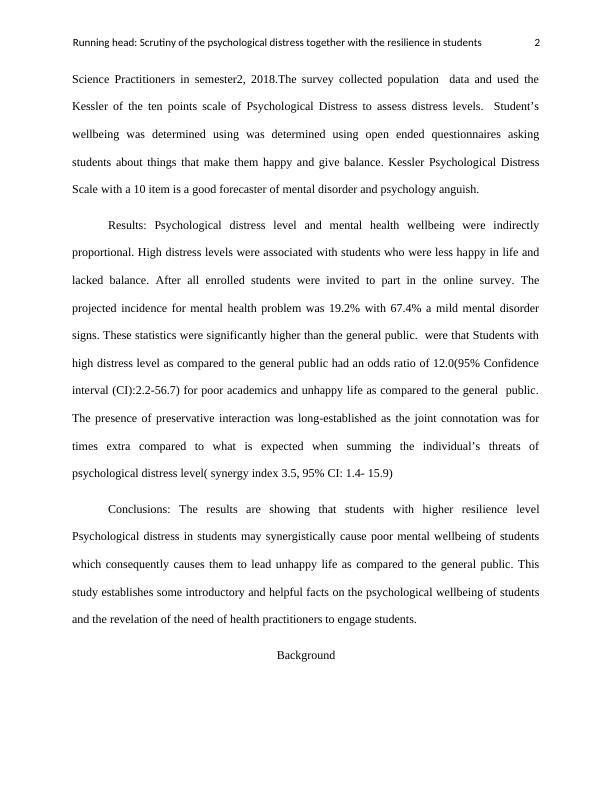Psychological Distress and Resilience in Students
Assessments 2 and 3 are parts of the same project. The project is a report of a data analysis that you shall conduct using the data we have collected in a survey in week 1 of the semester. Assessment 2 is an opportunity for you to submit work and receive feedback, which you can incorporate into your final report (i.e. Assessment 3). The sections of the report that you will submit for Assessment 2 are the methods section and at least one table and graph from your results section. You are not committed to using these same sections or graphs and tables in your final report.
Added on 2023-06-08
About This Document
Psychological Distress and Resilience in Students
Assessments 2 and 3 are parts of the same project. The project is a report of a data analysis that you shall conduct using the data we have collected in a survey in week 1 of the semester. Assessment 2 is an opportunity for you to submit work and receive feedback, which you can incorporate into your final report (i.e. Assessment 3). The sections of the report that you will submit for Assessment 2 are the methods section and at least one table and graph from your results section. You are not committed to using these same sections or graphs and tables in your final report.
Added on 2023-06-08
End of preview
Want to access all the pages? Upload your documents or become a member.



